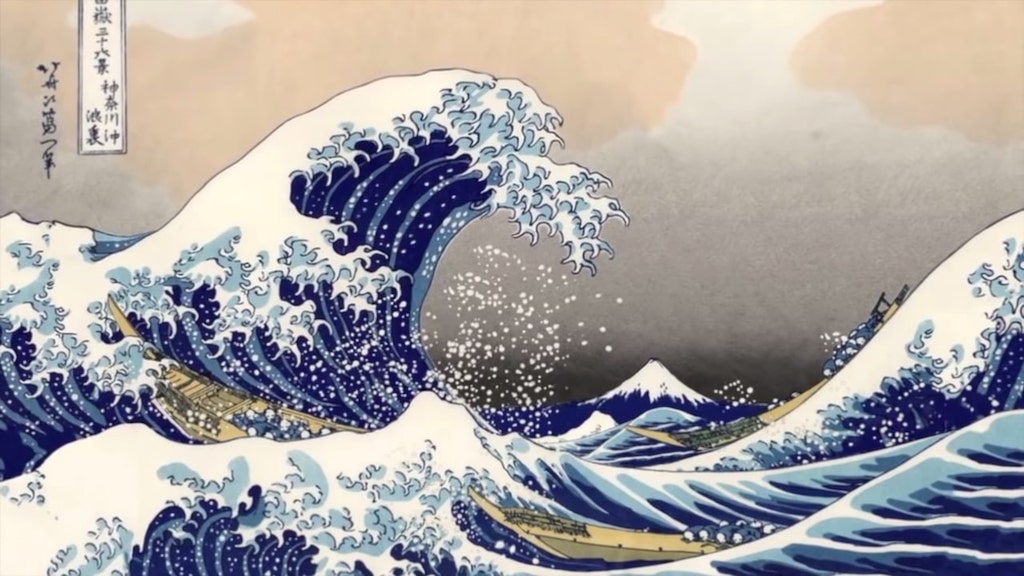
Art vlogger James Payne of Great Art Explained (previously) shared a deep-dive analysis of how the famous woodblock print “The Great Wave Off Kanagawa” by ukiyo-e artist Hokusai came to be.
Payne explained that the restrictive political environment and the lack of outside influences at the time caused Japanese artists to turn inwards and search out inspiration from within their own experiences.
In 1639 Japan closed its borders and cut itself off from the outside world. Foreigners were expelled, Western culture was forbidden, and Entering or leaving Japan was punishable by Death. It would remain that way for over 200 years. …The Great Wave of Kanagawa by Hokusai was made around 1830 it was a time when the rest of the world was becoming industrialized and the Japanese were concerned about foreign invasions.
While the piece itself is a simple but gorgeous image of a giant wall of water that threatens boats at sea, the artist gave the piece a far deeper and relevant meaning.
At first sight the great wave is simply an image of a serene and timeless japan but take a closer look and you see that this beautiful wave is about to engulf three boats of terrified fishermen as Mount fuji and the shores of Japan recede into the distance. This is an image of Japan fearful that the sea which has protected its peaceful isolation for so long will become its downfall.
Related Posts
Follow Laughing Squid on Facebook, Twitter, and Subscribe by Email.
The post A Deep Dive Analysis Into the Meaning Behind ‘The Great Wave Off Kanagawa’ by Hokusai first appeared on Laughing Squid.

0 Commentaires